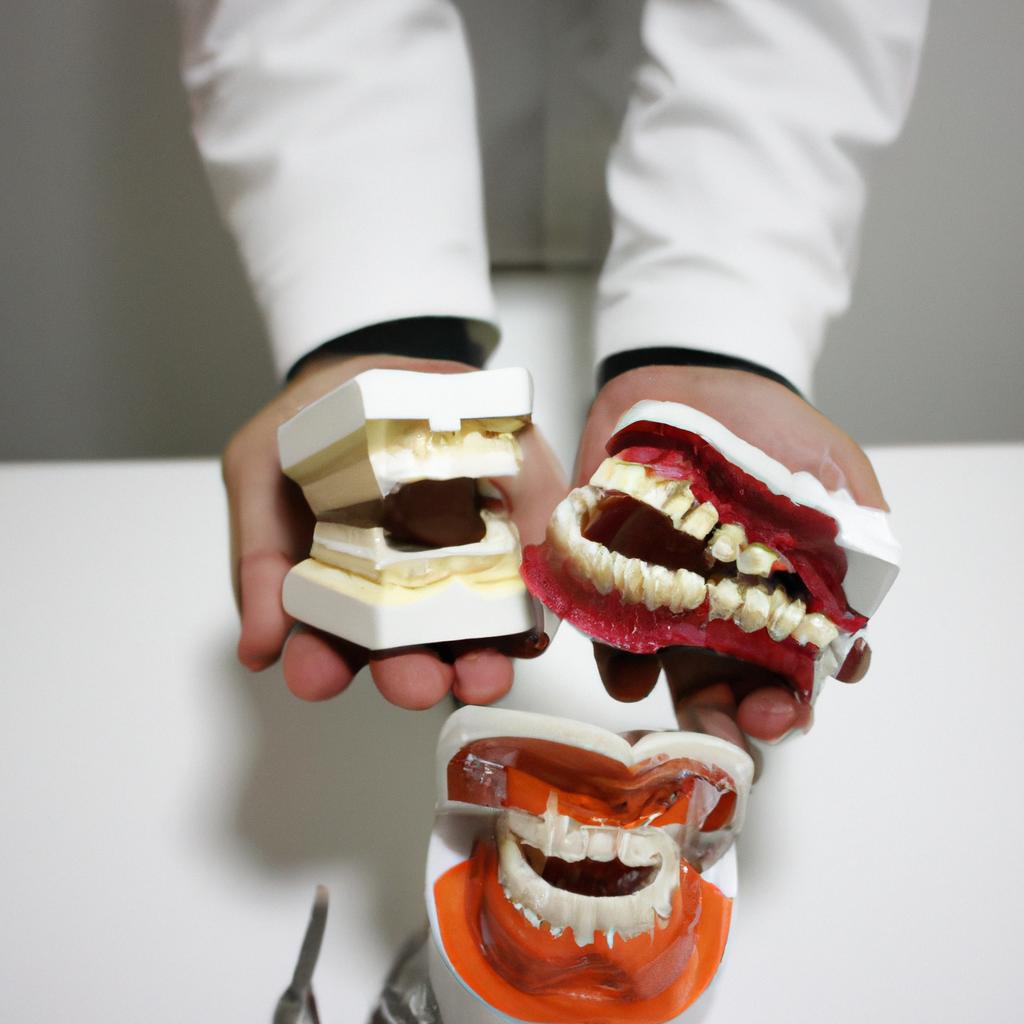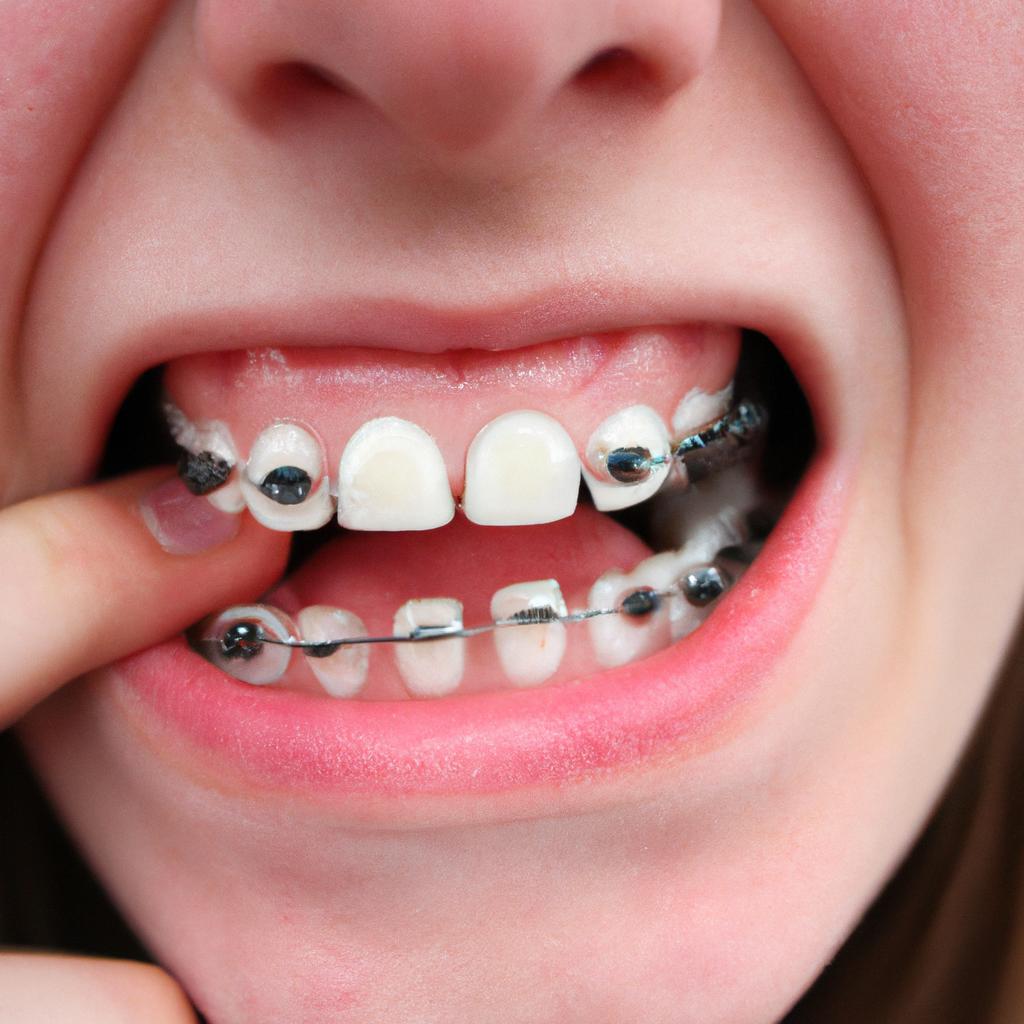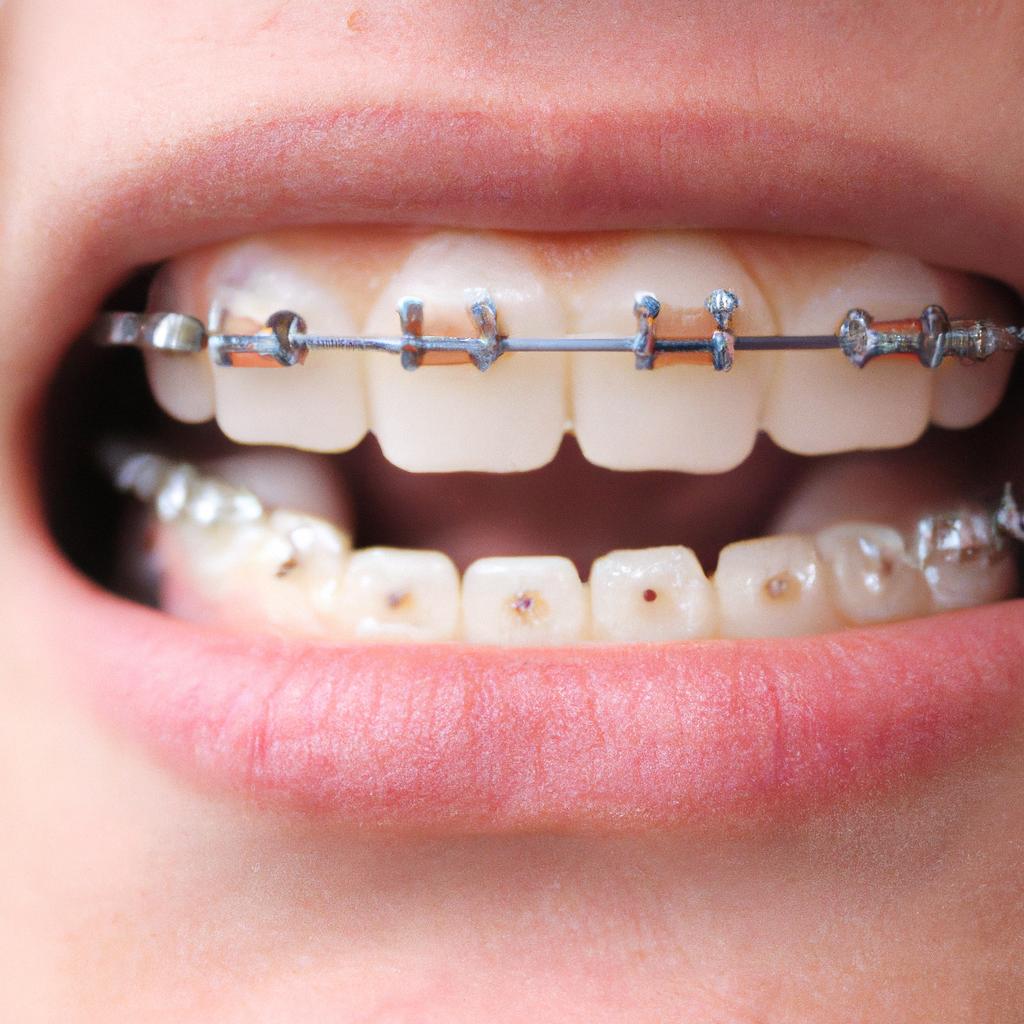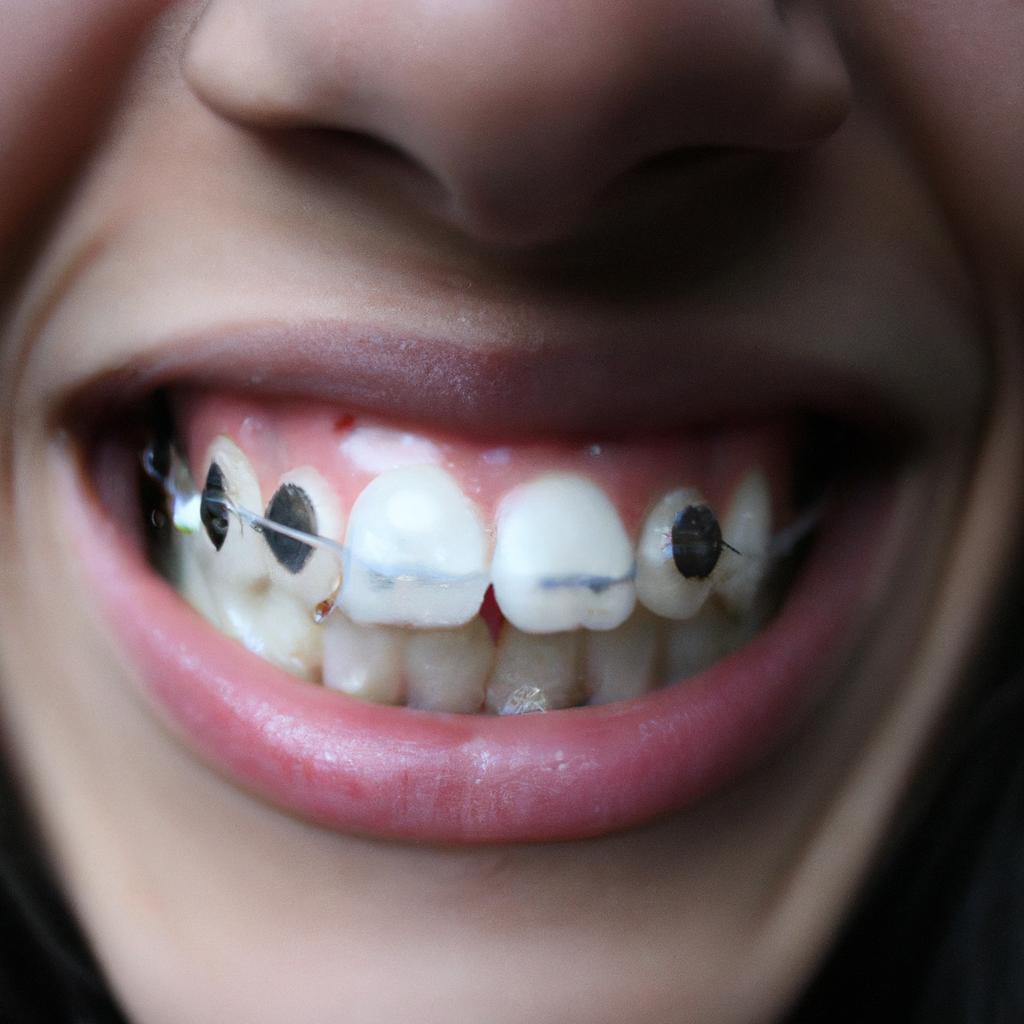Orthodontic Consultation in the Context of Dental Specialty: A Comprehensive Guide
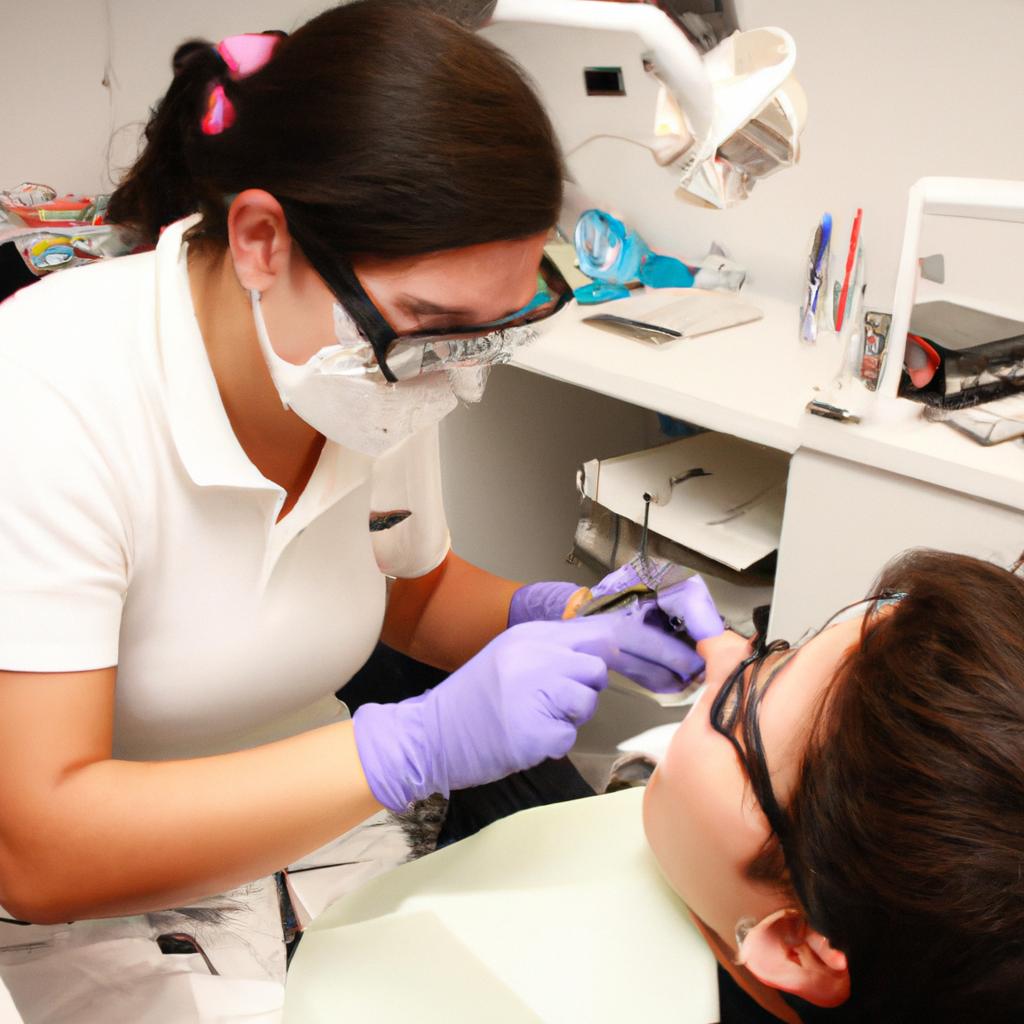
In the realm of dental specialty, orthodontic consultation plays a crucial role in guiding patients towards optimal oral health and aesthetic outcomes. This comprehensive guide aims to explore the various aspects and considerations involved in orthodontic consultations, providing valuable insights for both practitioners and patients alike. By examining a hypothetical case study of a teenager seeking orthodontic treatment, we can delve into the intricate process of an initial consultation, highlighting the importance of accurate diagnosis, thorough assessment, and effective communication.
The hypothetical case study revolves around Sarah, a 15-year-old who presents with misaligned teeth and bite irregularities. As she enters the orthodontist’s office for her first consultation appointment, this article will shed light on how professionals meticulously evaluate her condition using a combination of clinical examination techniques, diagnostic tests such as X-rays or digital scans, and careful consideration of her medical history. Additionally, it will emphasize the significance of understanding patient expectations and concerns during this pivotal stage. Through exploring these facets within the context of dental specialty practice, individuals will gain deeper insights into the vital components that contribute to successful orthodontic consultations.
Understanding the Role of an Orthodontic Consultation
Understanding the Role of an Orthodontic Consultation
Imagine a scenario where a teenager, Sarah, visits her dentist complaining about crooked teeth that make her self-conscious when smiling. Upon evaluation, her dentist recommends she schedule an orthodontic consultation to address her concerns. An orthodontic consultation plays a crucial role in assessing and planning appropriate treatment for individuals seeking dental realignment. This section aims to provide a comprehensive understanding of the significance of such consultations.
During an orthodontic consultation, patients undergo a thorough examination by an orthodontist specialized in correcting irregularities concerning tooth alignment and jaw positioning. The primary objective is to evaluate the patient’s current oral condition and determine whether orthodontic intervention is necessary. Through this process, various factors are considered, including age, facial structure, severity of malocclusion (improper bite), and overall oral health.
The importance of an orthodontic consultation can be summarized through the following key points:
- Improved Aesthetics: Crooked or misaligned teeth can affect one’s confidence and self-esteem. By addressing these concerns during an orthodontic consultation, patients gain access to potential treatment options that aim to enhance their smile and overall appearance.
- Enhanced Oral Function: Malocclusions not only impact aesthetics but also interfere with proper chewing and speaking abilities. An orthodontic consultation allows professionals to identify possible functional issues associated with misalignment and develop personalized treatment plans tailored to improving oral function.
- Prevention of Dental Complications: Misaligned teeth may lead to complications such as tooth decay, gum disease, or temporomandibular joint disorders if left untreated. Early identification through an orthodontic consultation enables proactive measures that mitigate future dental problems.
- Long-Term Oral Health: Properly aligned teeth contribute significantly to maintaining optimal oral hygiene practices. With improved accessibility for brushing and flossing techniques after undergoing corrective treatments suggested during a consultation, patients can achieve better long-term oral health outcomes.
To further illustrate the significance of an orthodontic consultation, consider the following table:
| Patient | Symptoms | Consultation Outcome |
|---|---|---|
| Sarah | Crooked teeth | Braces recommended |
| John | Overbite | Invisalign aligners suggested |
| Emma | Underbite | Jaw surgery required |
| David | Crowded teeth | Clear aligners advised |
As evident from this sample table, each patient’s specific condition warrants a tailored treatment plan. Orthodontic consultations provide individuals with personalized recommendations that address their unique dental concerns effectively.
In transitioning to discussing “The Importance of a Comprehensive Dental Examination,” it is essential to recognize how an orthodontic consultation serves as a crucial step towards achieving optimal dental health and overall well-being.
The Importance of a Comprehensive Dental Examination
Now, let us delve deeper into the importance of conducting a comprehensive dental examination during this crucial stage.
Imagine a scenario where a 15-year-old adolescent named Sarah visits an orthodontist for a consultation regarding her misaligned teeth. During the examination process, several factors are considered to assess Sarah’s condition effectively. These include her dental history, oral habits, facial structure analysis, radiographic evaluation (such as panoramic X-rays or cephalometric analysis), and intraoral photographs. By thoroughly evaluating these aspects, orthodontists can develop personalized treatment plans that address both functional and aesthetic concerns.
The assessment phase typically involves considering various key factors:
- Dental alignment: Evaluating the current positioning of teeth allows orthodontists to identify any irregularities or malocclusions that may require correction.
- Occlusion analysis: Assessing how upper and lower teeth fit together when biting down provides insights into potential bite issues such as overbite, underbite, crossbite, or open bite.
- Facial profile evaluation: Analyzing the relationship between different facial features – including lips, chin, nose – helps in determining if there are any underlying skeletal discrepancies.
- Soft tissue assessment: Observing soft tissues like gums and lips aids in understanding their influence on overall aesthetics and treatment planning.
To further illustrate these considerations visually:
| Factors | Description |
|---|---|
| Dental Alignment | Evaluates tooth position |
| Occlusion Analysis | Assesses bite problems |
| Facial Profile Evaluation | Examines facial proportions |
| Soft Tissue Assessment | Considers gum and lip appearance |
By examining these critical elements comprehensively, orthodontists gain essential information needed to diagnose patients accurately and recommend appropriate treatment options tailored to their specific needs. This approach ensures that the orthodontic consultation serves as a foundation for optimal treatment outcomes.
In our subsequent section, we will explore how orthodontists evaluate patients’ orthodontic needs and goals, further advancing the treatment planning process. By seamlessly transitioning into this topic, we can continue to shed light on the comprehensive nature of an orthodontic consultation without explicitly stating it as a new step or conclusion.
Evaluating the Patient’s Orthodontic Needs and Goals
Transitioning from the previous section, where we discussed the importance of a comprehensive dental examination, it is now crucial to delve into evaluating the patient’s orthodontic needs and goals. This assessment allows orthodontists to understand their patients’ specific requirements and develop personalized treatment plans accordingly.
To illustrate this point, let us consider a hypothetical case study. Meet Sarah, a 14-year-old girl with crowded teeth and an overbite. During her initial consultation, the orthodontist carefully examined her oral cavity, taking note of any malocclusions or discrepancies in jaw alignment. By conducting a thorough evaluation, including X-rays and digital imaging techniques, the orthodontist was able to identify Sarah’s precise orthodontic issues and devise a tailored treatment plan.
When assessing a patient’s orthodontic needs and goals, several key factors come into play:
- Dental Health History: Understanding the patient’s dental history provides insight into any previous treatments or concerns that may impact their current situation.
- Facial Analysis: Analyzing facial features helps determine how certain orthodontic corrections will affect overall appearance.
- Functional Considerations: Assessing how well the patient bites, chews, speaks, or breathes aids in identifying functional issues that need attention during treatment.
- Patient Preferences: Considering the patient’s desires regarding aesthetics and lifestyle can help guide decision-making when choosing between different treatment options.
To further emphasize these points visually, here is an emotional bullet-point list:
- Improved self-confidence through corrected dental irregularities
- Enhanced functionality leading to better oral health
- Pain relief from misaligned bite-related discomfort
- Long-term benefits such as reduced risk of tooth decay and gum disease
Additionally, presenting information in table format can effectively convey relevant details to engage our audience emotionally:
| Factors Influencing Evaluation | Importance |
|---|---|
| Severity of Orthodontic Issues | High |
| Patient’s Age | Moderate |
| Overall Dental Health | High |
| Impact on Facial Appearance | Moderate |
In conclusion, evaluating the patient’s orthodontic needs and goals is a critical step in providing effective treatment. By considering factors such as dental health history, facial analysis, functional considerations, and patient preferences, orthodontists can develop customized plans that address both clinical requirements and individual desires.
With the evaluation complete, it is now time to delve into exploring different treatment options and techniques for achieving optimal orthodontic outcomes.
Exploring Different Treatment Options and Techniques
Transitioning from the previous section’s evaluation of orthodontic needs and goals, this section delves into exploring various treatment options and techniques available to patients. To better illustrate these possibilities, consider the case of a 15-year-old patient named Sarah who presents with moderate crowding and an overbite.
When evaluating different treatment options for Sarah, several factors come into play. These include the severity of her dental issues, her personal preferences, as well as any underlying skeletal discrepancies. Orthodontists typically employ a combination of fixed appliances such as braces or clear aligners like Invisalign®️ along with auxiliary devices like elastics or headgear to correct malocclusions effectively.
To provide a comprehensive understanding of available treatments, let us explore four common approaches:
-
Traditional Braces:
- Consist of metal brackets bonded to the teeth
- Connected by archwires that apply gentle pressure on the teeth
- Allow precise control over tooth movement through wire adjustments
- Often chosen for complex cases requiring significant correction
-
Ceramic Braces:
- Similar to traditional braces but use tooth-colored or clear brackets
- Offer enhanced aesthetics compared to metal braces
- Slightly more fragile than metal brackets but still highly effective in treating most types of malocclusion
-
Lingual Braces:
- Custom-made brackets placed on the backside (lingual) surface of teeth
- Virtually invisible when smiling/interacting face-to-face
- Suitable for individuals concerned about visible appliances during treatment
-
Clear Aligners:
- Transparent plastic trays custom-made using computer technology
- Removable and replaced every few weeks to gradually move teeth
- Preferred by individuals seeking a discreet treatment option without dietary restrictions associated with braces
Table: Comparison of Common Orthodontic Treatment Options
| Treatment Option | Pros | Cons |
|---|---|---|
| Traditional Braces | Precise control over tooth movement | Visible metal brackets and wires |
| Ceramic Braces | Enhanced aesthetics | Slightly more fragile than traditional braces |
| Lingual Braces | Virtually invisible when smiling | Requires a period of adjustment |
| Clear Aligners | Removable for eating and cleaning | May not be suitable for complex cases |
By exploring these treatment options, orthodontic professionals can tailor the approach to meet each patient’s unique needs. This individualized selection ensures that patients like Sarah receive the most effective and appropriate care possible.
Transitioning into the subsequent section about “Considering the Impact of Dental Specialty on Orthodontic Treatment,” it is crucial to recognize how different dental specialties intersect with orthodontics. Understanding these relationships further enhances comprehensive patient care.
Considering the Impact of Dental Specialty on Orthodontic Treatment
In the previous section, we delved into the various treatment options and techniques available in orthodontics. Now, let us turn our attention to how dental specialty can influence these treatment choices.
Consider a hypothetical case study of a 12-year-old patient with severe malocclusion who presents for an orthodontic consultation. The orthodontist must carefully evaluate the patient’s specific needs while taking into account their unique dental circumstances. Factors such as tooth size discrepancies, crowding, crossbite, or skeletal issues may require different approaches to achieve optimal results.
When determining the most suitable treatment plan, it is essential to consider the impact of dental specialty on orthodontic care. Here are some key points to keep in mind:
-
Collaboration: Orthodontists often collaborate with other dental specialists to ensure comprehensive and holistic patient care. This collaboration may involve working alongside oral surgeons for cases requiring jaw surgery or coordinating with periodontists for patients with gum disease that affects orthodontic treatment outcomes.
-
Interdisciplinary Approach: Some cases may necessitate an interdisciplinary approach where multiple specialties work together towards a common goal. For instance, combining orthodontic treatment with prosthodontics can be beneficial when planning rehabilitation for patients with missing teeth.
-
Therapeutic Strategies: Depending on the patient’s age and dental history, certain therapeutic strategies may be more appropriate than others. Early intervention treatments like palatal expansion devices or space maintainers might be recommended by pediatric dentists or general practitioners before referring patients to orthodontists.
-
Patient Education: Each dental specialist plays a vital role in educating patients about their specific expertise within the overall treatment plan. By providing thorough explanations and answering any questions, they help empower patients to make informed decisions regarding their oral health.
To further illustrate this concept, here is a table summarizing potential collaborations between orthodontists and other dental specialists:
| Dental Specialist | Collaboration with Orthodontist |
|---|---|
| Oral Surgeon | Jaw surgery for severe skeletal discrepancies |
| Periodontist | Gum disease management during orthodontic treatment |
| Prosthodontist | Rehabilitation planning for patients with missing teeth |
By considering the influence of dental specialty on orthodontic care, we can optimize treatment outcomes and provide comprehensive solutions to our patients.
Transitioning into the subsequent section about “Collaborating with Other Dental Specialists for Optimal Patient Care,” it is crucial to recognize that teamwork among dental specialists is essential in achieving the best possible results.
Collaborating with Other Dental Specialists for Optimal Patient Care
In the previous section, we explored how dental specialty can have a significant impact on orthodontic treatment. Now, let us delve further into this topic by examining specific scenarios where collaboration between orthodontists and other dental specialists becomes crucial for optimal patient care.
Imagine a case where an adult patient seeks orthodontic treatment to correct misaligned teeth and improve their smile. However, upon examination, it is discovered that they also suffer from periodontal disease. In such cases, close collaboration with a periodontist is essential to ensure successful orthodontic treatment. The periodontist can address any gum inflammation or bone loss before the orthodontic appliances are applied, creating a solid foundation for tooth movement and preventing complications during treatment.
When facing patients with craniofacial anomalies like cleft lip and palate, teamwork among multiple dental specialists is paramount. Besides the orthodontist who focuses on aligning the teeth in these complex cases, oral surgeons play a vital role in addressing skeletal discrepancies through surgical interventions. Additionally, speech therapists often collaborate closely with both the orthodontist and surgeon to help manage speech difficulties associated with these conditions.
To illustrate the importance of interdisciplinary cooperation even further, consider another scenario involving a patient requiring extensive restorative dentistry along with orthodontics. By working together with prosthodontists or general dentists specializing in restorative procedures, the orthodontist can plan treatment sequencing effectively. This ensures that any necessary fillings, crowns, or implants are placed at appropriate stages throughout the course of orthodontic therapy.
Collaborating seamlessly between different specialties not only enhances patient outcomes but also fosters comprehensive care tailored to individual needs. When various dental experts come together to provide coordinated treatments, patients benefit from improved aesthetics, functional occlusion, enhanced oral health hygiene practices, and increased overall satisfaction.
Below is a bullet point list highlighting key advantages of interdisciplinary collaboration in orthodontic treatment:
- Improved treatment planning and sequencing
- Enhanced communication between dental specialists
- Comprehensive care addressing multiple dental concerns simultaneously
- Better patient satisfaction due to coordinated treatments
Furthermore, here is a table illustrating the collaborative efforts among different dental specialties for optimal patient care:
| Dental Specialist | Role |
|---|---|
| Orthodontist | Focuses on teeth alignment and occlusion. |
| Periodontist | Addresses gum diseases and bone loss. |
| Oral Surgeon | Conducts surgical interventions for skeletal discrepancies. |
| Prosthodontist/Restorative Dentist | Performs restorative procedures such as fillings, crowns, or implants. |
In summary, successful orthodontic treatment often necessitates close collaboration with various dental specialists. By combining their expertise, these professionals can provide comprehensive care that addresses not only tooth alignment but also other associated oral health issues. Through effective teamwork and interdisciplinary cooperation, patients can achieve improved aesthetics, functional occlusion, enhanced oral hygiene practices, and ultimately higher overall satisfaction with their orthodontic outcomes.

